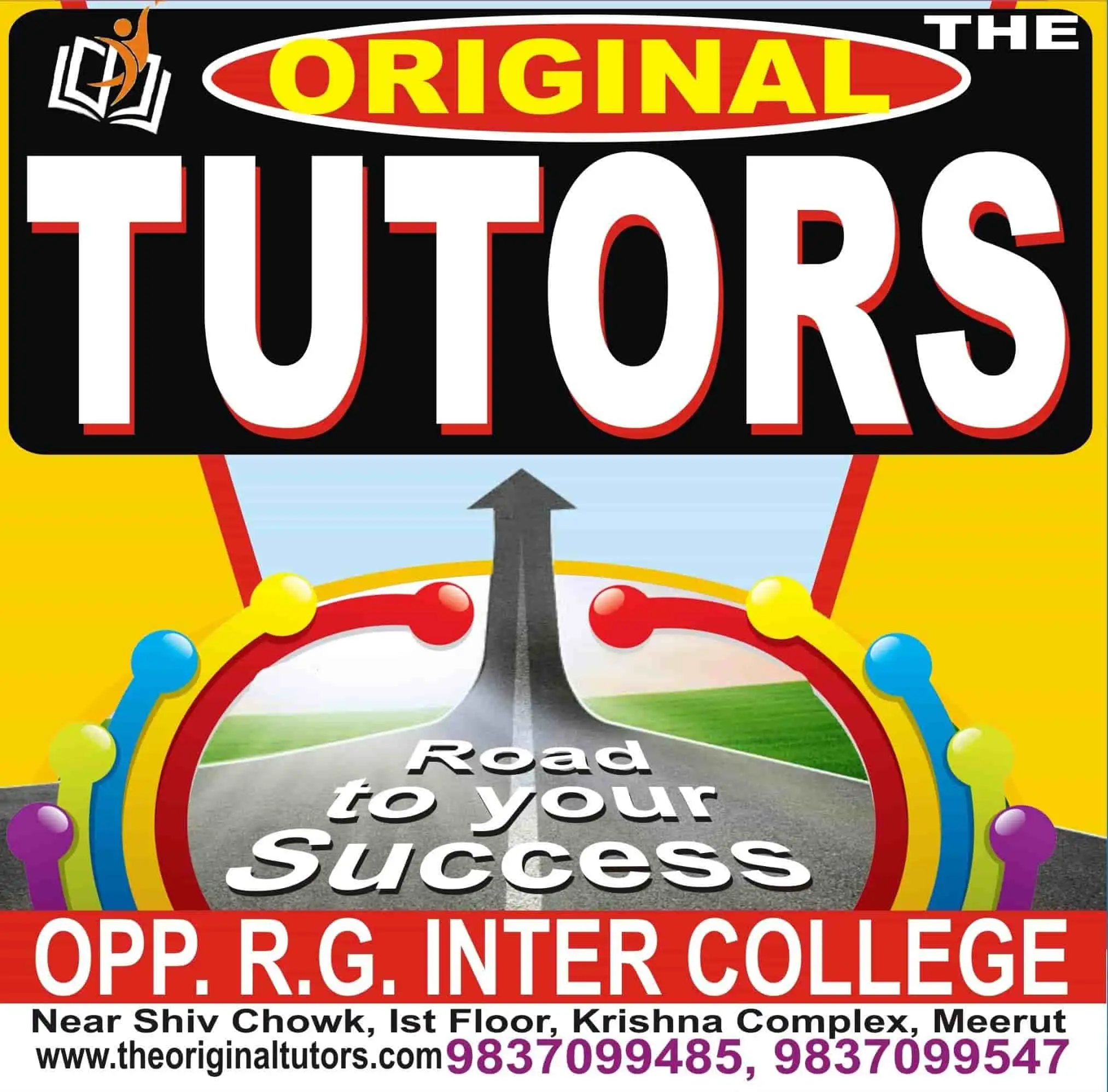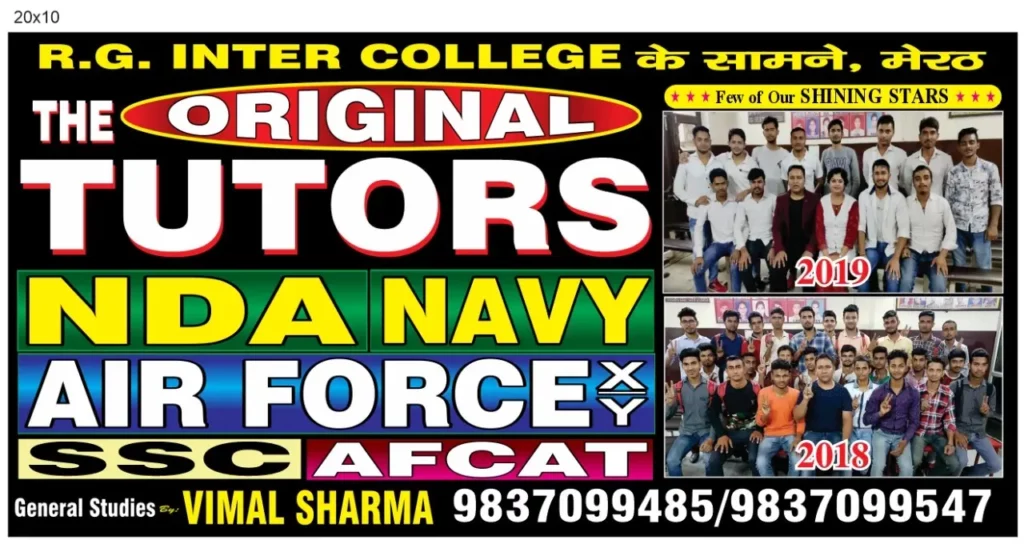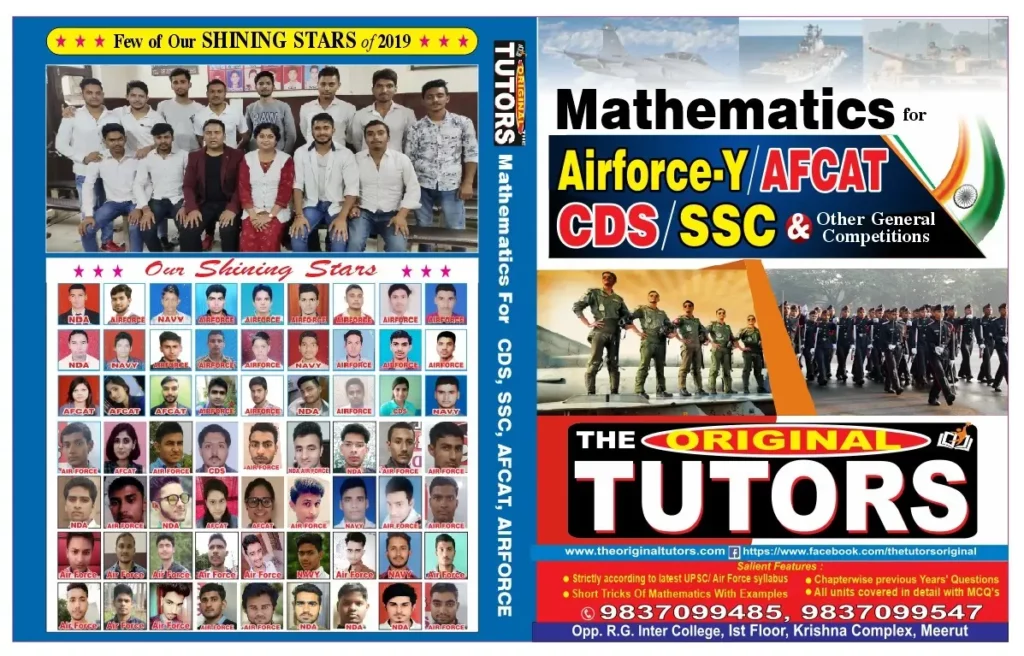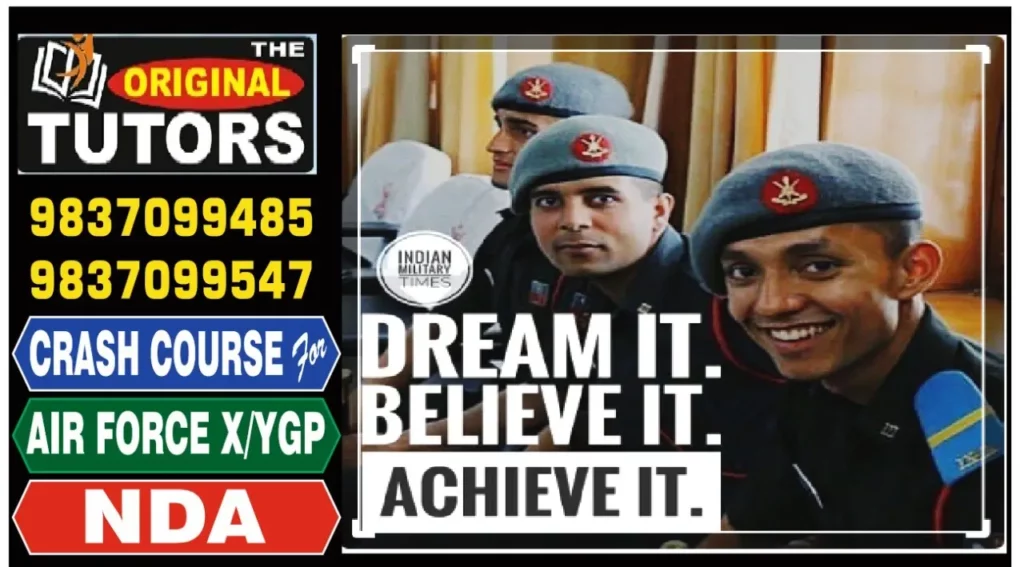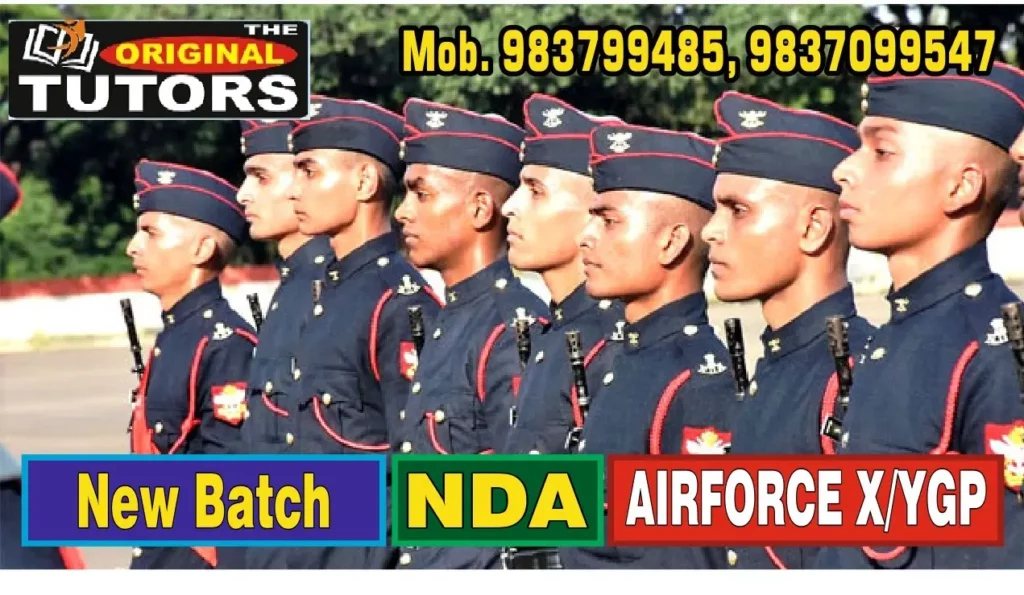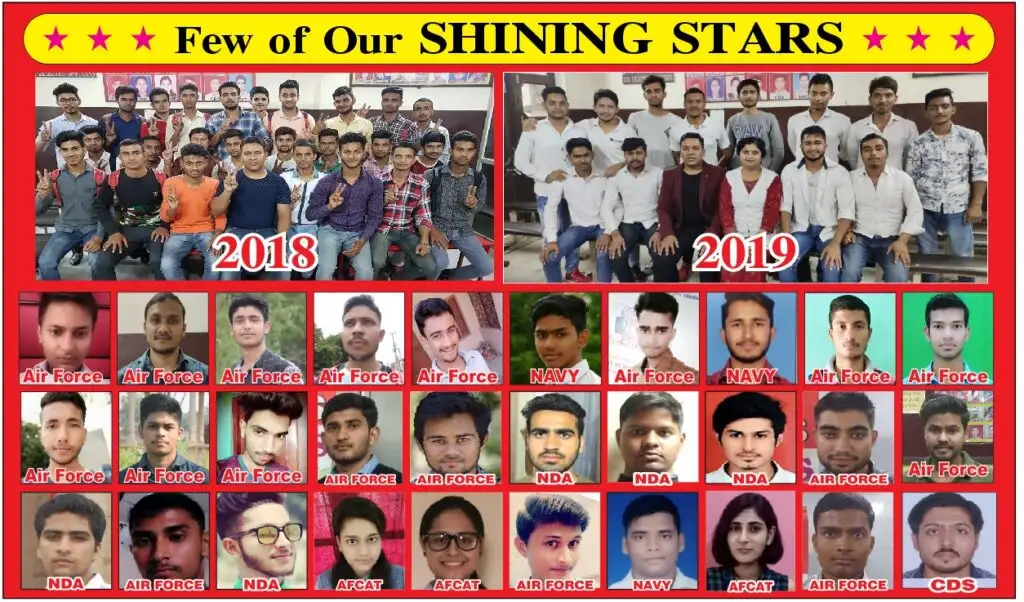NDA
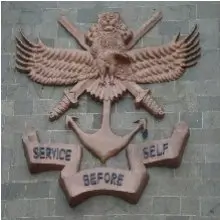
The National Defence Academy(NDA), Pune
You can take the NDA entrance exam right after class XI. Clear the UPSC exam and a 5-day Service Selection Board interview, pass your medicals, and you’re in NDA. Three years in NDA and you will be a much improved person.
Apart from providing graduation degrees, NDA has the finest infrastructure for professional training. You’ll find phenomenal opportunities to develop your personality and cultivate new interests.
There are 31 extra-curricular activities to choose from. You have aero
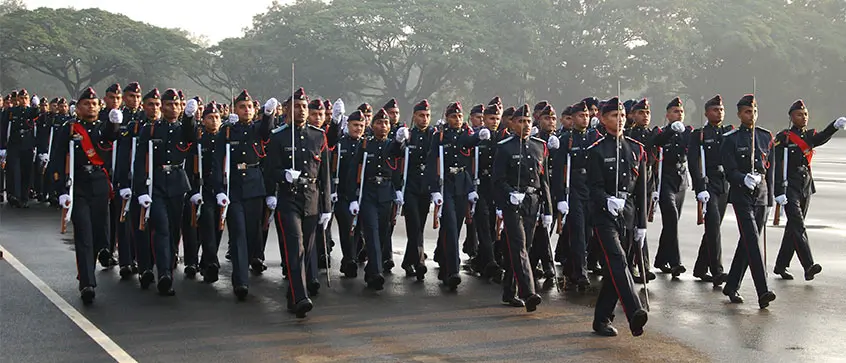
National Defence Academy (NDA)
| Vacancies Per Course | National Defence Academy: 370 ( 208 for Army, 42 for Navy and 120 for Air Force (including 28 for ground Duties) ) Naval Academy: (10+2 Cadet Entry Scheme) : 30 Total: 400 |
| Notify in Employment News Paper | Probably in December and June or notified by UPSC |
| Eligibility Criteria | |
| Age | Between 15½ years and 18½ years |
| Qualification | For Army Wing of National Defence Academy:—12th Class pass of the 10+2 pattern of School Education or equivalent 6 examinations conducted by a State Education Board or a University. For Air Force and Naval Wings of National Defence Academy and for the 10+2 Cadet Entry Scheme at the Indian Naval Academy:—12th Class pass with Physics, Chemistry and Mathematics of the 10+2 pattern of School Education or equivalent conducted by a State Education Board or a University. Candidates who are appearing in the 12th Class under the 10+2 pattern of School Education or equivalent examination can also apply for this examination. |
| Marital Status | Unmarried |
Examination Eligibility And Syllabus for NDA
SCHEME For NDA EXAMINATION
1. The subjects of the written examination, the time allowed and the maximum marks allotted to each subject will be as follows:—
| Subject | Code | Duration | Maximum Marks |
| Mathematics | 01 | 150 min | 300 |
| General Ability Test | 02 | 150 min | 600 |
| SSB Test/ Interview | 900 |
Eligibility Criteria For NDA
(a) Nationality:
A candidate must be an unmarried male or female and must be:
(i) a citizen of India, or (ii) a subject of Bhutan, or (iii) a subject of Nepal, or (iv) a Tibetan refugee who came over to India before the 1st January, 1962 with the intention of permanently settling in India, or (v) a person of Indian origin who has migrated from Pakistan, Burma, Sri Lanka and East African Countries of Kenya, Uganda, the United Republic of Tanzania, Zambia, Malawi, Zaire and Ethiopia or Vietnam with the intention of permanently settling in India.
(b) Age Limits, Sex and Marital Status:
Only unmarried male and female candidates between 151/2 years and 181/2 years are eligible to apply.
(c) Educational Qualifications:
(i) For Army Wing of National Defence Academy: —12th Class pass of the 10+2 pattern of School Education or equivalent examination conducted by a State Education Board or a University.
(ii) For Air Force and Naval Wings of National Defence Academy and for the 10+2 Cadet Entry Scheme at the Indian
Naval Academy: —12th Class pass of the 10+2 pattern of School Education or equivalent with Physics and Mathematics conducted by a State Education Board or a University.
**** Candidates who are appearing in the 12th Class under the 10+2 pattern of School Education or equivalent examination can also apply for this examination
HOW TO APPLY:
Candidates are required to apply Online by using the website http://upsconline.nic.in Detailed instructions for filling up online applications are available on the above-mentioned website.
TWO-STAGE SELECTION PROCEDURE FOR NDA
Two-stage selection procedure based on Psychological Aptitude Test and Intelligence Test has been introduced at Selection Centres/Air Force Selection Boards/Naval Selection Boards. All the candidates will be put to stage-one test on first day of reporting at Selection Centres/Air Force Selection Boards/Naval Selection Boards. Only those candidates who qualify at stage one will be admitted to the second stage/remaining tests. Those candidates who qualify stage II will be required to submit the Original Certificates along with one photocopy each of: (i) Original Matriculation pass certificate or equivalent in support of date of birth, (ii) Original 10+2 pass certificate or equivalent in support of educational qualification.
Candidates who appear before the Services Selection Board and undergo the test there, will do so at their own risk and will not be entitled to claim any compensation or other relief from Government in respect of any injury which they may sustain in the course of or as a result of any of the tests given to them at the Services Selection Board whether due to the negligence of any person or otherwise. Parents or guardians of the candidates will be required to sign a certificate to this effect.
To be acceptable, candidates for the Army/Navy/Naval Academy and Air Force should secure the minimum qualifying marks separately in (i) Written examination as fixed by the Commission at their discretion and (ii) Officer Potentiality Test as fixed by the Services Selection Board at their discretion. Over and above candidates for the Air Force, and all the SSB qualified candidates as per their willingness, eligibility and preference for flying branch of Air Force, should separately qualify the CPSS.
Subject to these conditions the qualified candidates will then be placed in a single combined list on the basis of total marks secured by them in the Written Examination and the Services Selection Board Tests. The final allocation/selection for admission to the Army, Navy, Air Force of the National Defence Academy and 10+2 Cadet Entry Scheme of Indian Naval Academy will be made upto the number of vacancies available subject to eligibility, medical fitness and merit-cum-preference of the candidates. The candidates who are eligible to be admitted to multiple Services/Courses will be considered for allocation/selection with reference to their order or preferences and in the event of their final allocation/ selection to one Service/Course, they will not be considered for admission to other remaining Services/Courses.
Syllabus
It Consists the Syllabus of both Paper Mathematics and General Ability Test For NDA
Paper I Mathematics
1. ALGEBRA: Concept of set, operations on sets, Venn diagrams. De Morgan laws, Cartesian product, relation, equivalence relation. Representation of real numbers on a line. Complex numbers—basic properties, modulus, argument, cube roots of unity. Binary system of numbers. Conversion of a number in decimal system to binary system and vice-versa. Arithmetic,Geometric and Harmonic progressions. Quadratic equations with real coefficients. Solution of linear inequations of two variables by graphs. Permutation and Combination. Binomial theorem and its applications. Logarithms and their applications.
2. MATRICES AND DETERMINANTS: Types of matrices, operations on matrices. Determinant of a matrix, basic properties of determinants. Adjoint and inverse of a square matrix, Applications-Solution of a system of linear equations in two or three unknowns by Cramer’s rule and by Matrix Method.
3. TRIGONOMETRY: Angles and their measures in degrees and in radians. Trigonometrical ratios. Trigonometric identities Sum and difference formulae. Multiple and Sub-multiple angles. Inverse trigonometric functions. Applications-Height and distance, properties of triangles.
4. ANALYTICAL GEOMETRY OF TWO AND THREE DIMENSIONS: Rectangular Cartesian Coordinate system. Distance formula. Equation of a line in various forms. Angle between two lines. Distance of a point from a line. Equation of a circle in standard and in general form. Standard forms of parabola, ellipse and hyperbola. Eccentricity and axis of a conic. Point in a three-dimensional space, distance between two points. Direction Cosines and direction ratios. Equation two points. Direction Cosines and direction ratios. Equation of a plane and a line in various forms. Angle between two lines and angle between two planes. Equation of a sphere.
5. DIFFERENTIAL CALCULUS: Concept of a real valued function–domain, range and graph of a function. Composite functions, one to one, onto and inverse functions. Notion of limit, Standard limits—examples. Continuity of functions—examples, algebraic operations on continuous functions. Derivative of function at a point, geometrical and physical interpretation of a derivative—applications. Derivatives of sum, product and quotient of functions, derivative of a function with respect to another function, derivative of a composite function. Second order derivatives. Increasing and decreasing functions. Application of derivatives in problems of maxima and minima.
6. INTEGRAL CALCULUS AND DIFFERENTIAL EQUATIONS: Integration as inverse of differentiation, integration by substitution and by parts, standard integrals involving algebraic expressions, trigonometric, exponential and hyperbolic functions. Evaluation of definite integrals—determination of areas of plane regions bounded by curves—applications. Definition of order and degree of a differential equation, formation of a differential equation by examples. General and particular solution of a differential equations, solution of first order and first degree differential equations of various types—examples. Application in problems of growth and decay.
7. VECTOR ALGEBRA: Vectors in two and three dimensions, magnitude and direction of a vector. Unit and null vectors, addition of vectors, scalar multiplication of a vector, scalar product or dot product of two vectors. Vector product or cross product of two vectors. Applications—work done by a force and moment of a force and in geometrical problems.
8. STATISTICS AND PROBABILITY: Statistics: Classification of data, Frequency distribution, cumulative frequency distribution—examples. Graphical representation—Histogram, Pie Chart, frequency polygon— examples. Measures of Central tendency—Mean, median and mode. Variance and standard deviation—determination and comparison. Correlation and regression. Probability: Random experiment, outcomes and associated sample space, events, mutually exclusive and exhaustive events, impossible and certain events. Union and Intersection of events. Complementary, elementary and composite events. Definition of probability—classical and statistical—examples. Elementary theorems on probability—simple problems. Conditional probability, Bayes’ theorem—simple problems. Random variable as function on a sample space. Binomial distribution, examples of random experiments giving rise to Binominal distribution.
Paper II General Ability Test
Part ‘A’ ENGLISH: – The question paper in English will be designed to test the candidate’s understanding of English and workman like use of words. The syllabus covers various aspects like: Grammar and usage, vocabulary, comprehension and cohesion in extended text to test the candidate’s proficiency in English.
Part ‘B’ GENERAL KNOWLEDGE
The question paper on General Knowledge will broadly cover the subjects : Physics, Chemistry, General Science, Social Studies, Geography and Current Events. – The syllabus given below is designed to indicate the scope of these subjects included in this paper. The topics mentioned are not to be regarded as exhaustive and questions on topics of similar nature not specifically mentioned in the syllabus may also be asked. Candidate’s answers are expected to show their knowledge and intelligent understanding of the subject.
Section ‘A’ (Physics) Physical Properties and States of Matter, Mass, Weight, Volume, Density and Specific Gravity, Principle of Archimedes, Pressure Barometer. Motion of objects, Velocity and Acceleration, Newton’s Laws of Motion, Force and Momentum, Parallelogram of Forces, Stability and Equilibrium of bodies, Gravitation, elementary ideas of work, Power and Energy. Effects of Heat, Measurement of Temperature and Heat, change of State and Latent Heat, Modes of transference of Heat. Sound waves and their properties, Simple musical instruments. Rectilinear propagation of Light, Reflection and refraction. Spherical mirrors and Lenses, Human Eye. Natural and Artificial Magnets, Properties of a Magnet, Earth as a Magnet. Static and Current Electricity, conductors and Nonconductors, Ohm’s Law, Simple Electrical Circuits, Heating, Lighting and Magnetic effects of Current, Measurement of Electrical Power, Primary and Secondary Cells, Use of X-Rays. General Principles in the working of the following: Simple Pendulum, Simple Pulleys, Siphon, Levers, Balloon, Pumps, Hydrometer, Pressure Cooker, Thermos Flask, Gramophone, Telegraphs, Telephone, Periscope, Telescope, Microscope, Mariner’s Compass; Lightening Conductors, Safety Fuses.
Section ‘B’ (Chemistry) Physical and Chemical changes. Elements, Mixtures and Compounds, Symbols, Formulae and simple Chemical Equations, Law of Chemical Combination (excluding problems). Properties of Air and Water. Preparation and Properties of Hydrogen, Oxygen, Nitrogen and Carbondioxide, Oxidation and Reduction. Acids, bases and salts. Carbon—different forms. Fertilizers—Natural and Artificial. Material used in the preparation of substances like Soap, Glass, Ink, Paper, Cement, Paints, Safety Matches and GunPowder. Elementary ideas about the structure of Atom, Atomic Equivalent and Molecular Weights, Valency.
Section ‘C’ (General Science) Difference between the living and non-living. Basis of Life—Cells, Protoplasms and Tissues. Growth and Reproduction in Plants and Animals. Elementary knowledge of Human Body and its important organs. Common Epidemics, their causes and prevention. Food—Source of Energy for man. Constituents of food, Balanced Diet. The Solar System—Meteors and Comets, Eclipses. Achievements of Eminent Scientists.
Section ‘D’ (History, Freedom Movement etc.) A broad survey of Indian History, with emphasis on Culture and Civilisation. Freedom Movement in India. Elementary study of Indian Constitution and Administration. Elementary knowledge of Five Year Plans of India. Panchayati Raj, Co-operatives and Community Development. Bhoodan, Sarvodaya, National Integration and Welfare State, Basic Teachings of Mahatma Gandhi. Forces shaping the modern world; Renaissance, Exploration and Discovery; War of American Independence. French Revolution, Industrial Revolution and Russian Revolution. Impact of Science and Technology on Society. Concept of one World, United Nations, Panchsheel, Democracy, Socialism and Communism. Role of India in the present world.
Section ‘E’ (Geography) The Earth, its shape and size. Lattitudes and Longitudes, Concept of time. International Date Line. Movements of Earth and their effects. Origin of Earth. Rocks and their classification; Weathering—Mechanical and Chemical, Earthquakes and Volcanoes. Ocean Currents and Tides Atmosphere and its composition; Temperature and Atmospheric Pressure, Planetary Winds, Cyclones and Anti-cyclones; Humidity; Condensation and Precipitation; Types of Climate, Major Natural regions of the World. Regional Geography of India—Climate, Natural vegetation. Mineral and Power resources; location and distribution of agricultural and Industrial activities. Important Sea ports and main sea, land and air routes of India. Main items of Imports and Exports of India.
Section ‘F’ (Current Events) Knowledge of Important events that have happened in India in the recent years. Current important world events. Prominent personalities—both Indian and International including those connected with cultural activities and sports.
NOTE: Out of maximum marks assigned to part ‘B’ of this paper, questions on Sections ‘A’, ‘B’, ‘C’, ‘D’, ‘E’ and ‘F’ will carry approximately 25%, 15%, 10%, 20%, 20% and 10% weightages respectively.
Intelligence and Personality Test (SSB)
The SSB procedure for NDA consists of
(a) Stage I comprises of Officer Intelligence Rating (OIR) tests are Picture Perception * Description Test (PP&DT). The candidates will be shortlisted based on combination of performance in OIR Test and PP&DT.
(b) Stage II Comprises of Interview, Group Testing Officer Tasks, Psychology Tests and the Conference. These tests are conducted over 4 days. The details of these tests are given on the website http://joinindianarmy.nic.in/ The personality of a candidate is assessed by three different assessors viz. The Interviewing Officer (IO), Group Testing Officer (GTO) and the Psychologist. There are no separate weightage for each test. The mks are allotted by assessors only after taking into consideration the performance of the candidate holistically in all the test. In addition, marks for Conference are also allotted based on the initial performance of the Candidate in the three techniques and decision of the Board. All these have equal weightage. The various tests of IO, GTO and Psych are designed to bring out the presence/absence of Officer Like Qualities and their trainability in a candidate. Accordingly, candidates are Recommended or Not Recommended at the SS
Note
*Eligibility Criteria is also a subject of Change please Visit the Notification on the Official Website Union Service Public Commission:- http://upsc.gov.in/
For Reading Eligibility Criteria for Air Force X/Y Click on http://airforcecoaching.in/air-force/
For Reading Eligibility Criteria for Navy Click on http://airforcecoaching.in/navy/
For Reading Eligibility Criteria for CDS Click on http://airforcecoaching.in/cds/

